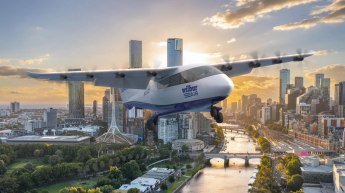
Singapore Airlines (SIA) has sounded a note of caution about the recent rise in fuel prices after posting a healthy rise in net profit for the nine months to December 31 2017 amid stronger passenger and cargo flown revenue.
Net profit for the period came in at S$711 million, SIA said in a regulatory filing to the Singapore Exchange on Tuesday, up 42.5 per cent or $212.4 million from S$498.7 million in the prior corresponding period.
All of SIA’s operating businesses, with the exception of regional wing Silkair, achieved an improvement in operating profit for the nine-month period, compared with the prior year.
The Singapore Airlines business, also known as the parent airline, achieved an operating profit of S$566 million, up from S$427 million in the prior corresponding period.
The strong rebound in the cargo market also helped lift SIA Cargo to a S$120 million operating profit for the period, compared with S$8 million in the prior year.
And SIA Engineering achieved an 17 per cent improvement in operating profit to S$56 million.
However, Silkair suffered a 46 per cent decline in operating profit to S$40 million as higher fuel, handling and aircraft maintenance and overhaul, costs outpaced revenue growth.
SIA highlighted fuel prices and the addition of extra seats in its outlook statement accompanying its latest financial results
“Despite a stabilisation in yields in recent months, pressure on yields remains as competitors mount significant capacity in key markets with aggressive pricing,” SIA said in a statement.
“These challenging market conditions have been exacerbated by recent fuel price movements.
“Fuel prices have been trending higher and volatility is expected to persist in the months ahead, as the market continues to balance demand and supply.”
Oil prices touched a four-year high of US$70 a barrel in January, compared with close to US$40 a barrel in mid-2017.
The cost of fuel typically represents about 30 per cent of an airline’s total costs.
On fuel prices, SIA said it had hedged 40.7 per cent of its fuel requirements at a weighted average jet fuel price of US$65 per barrel for the fourth quarter. Meanwhile, its hedging program has covered 47 per cent of its projected annual fuel consumption up to 2022/23 at average prices of between US$53-59 a barrel.
International Air Transport Association (IATA) director general and chief executive Alexandre de Juniac said the recent moves in oil prices may lead to upwards pressure on airfares.
“It is not so much a competitive differentiator for an airline,” de Juniac said on February 5 according to a report from Reuters.
“It puts pressure on costs and it is more a fare inflation trigger.”
SIA is Australia’s second-largest foreign carrier with figures from the Bureau of Infrastructure, Transport and Regional Economics (BITRE) showing the airline carried 8.1 per cent of all international passengers into and out of the country in the 11 months to November 2017.
It trails only Emirates Airline, which had 8.4 per cent of Australia’s international traffic, among non-Australian flag carriers.
SIA, like many others, has battled the rapid international expansion of Chinese airlines and the ongoing rise of Middle Eastern carriers offering long-haul to long-haul connections through their hubs, which have bitten into markets such as the ultra-competitive Kangaroo route from Australia to Europe.
And at the budget end, Asian-based low-cost carriers have won passengers happy to pay lower fares for a no-frills product on short- and medium-haul routes.
In response, SIA has invested in new ventures such as India-based carrier Vistara, forged new partnerships and become a major shareholder in Virgin Australia.
The airline group has also greatly expanded its regional wing Silkair, whose narrowbody aircraft are more ideally suited to opening new markets within the Asia Pacific, while it has brought low-cost-carriers Scoot and Tigerair Singapore together under the Scoot brand to target the low-fares end of the market.
And at the parent airline, SIA has been investing in its fleet with the next-generation A350-900 and soon-be-delivered 787-10 replacing older, less fuel-efficient aircraft.
SIA is the launch customer of the 787-10 and is due to take delivery of the first of 49 of the type on order in March. After operating the aircraft on Singapore-Bangkok and Singapore-Kuala Lumpur as part of crew familiarisation efforts, the first regular route will be Singapore-Osaka.
The company has also established a transformation office to conduct a wide-ranging review of the airline group’s network, fleet, product and service, as well as organisational structure and processes.
SIA said the three-year transformation program was “well on track, with initiatives already bearing fruit in terms of enhancement of customer experience, revenue generation and improvements in operational efficiency”.
“New initiatives are being actively explored. Digital innovation is an important enabler of the transformation programme, with significant investments being made to lift the Group’s digital capabilities,” SIA said.
“Through the various key strategic initiatives and strength of the portfolio of airlines serving both full-service and low-cost market segments, the SIA Group is well positioned to meet the ongoing competitive challenges.”
Fuel prices exacerbate "challenging" market conditions says Singapore Airlines
You need to be a member to post comments. Become a member today!
Comments (4)
Comments are closed.















Lechuga
says:Little off topic to the post, but the 787-10 looks mighty fine from the outside. Little disappointed SIA gave away their 787-9s to Scoot.
Brad
says:@Lechuga Don’t be too disappointed; they kept the A359s which are the much more comfortable alternative, particularly if you are in Economy Class.
Mark
says:@Brad, unfortunately you will be disappointed if you ever fly in their A330’s – especially business class…
Riplander
says:@Mark good thing they are phasing them out now